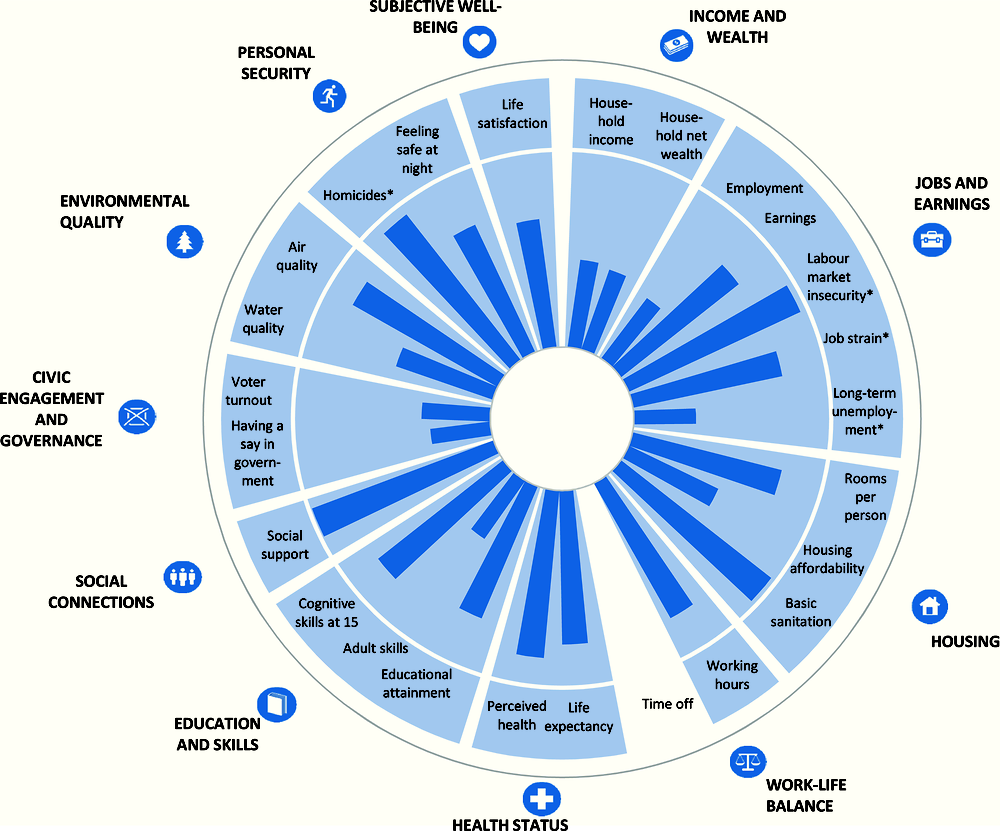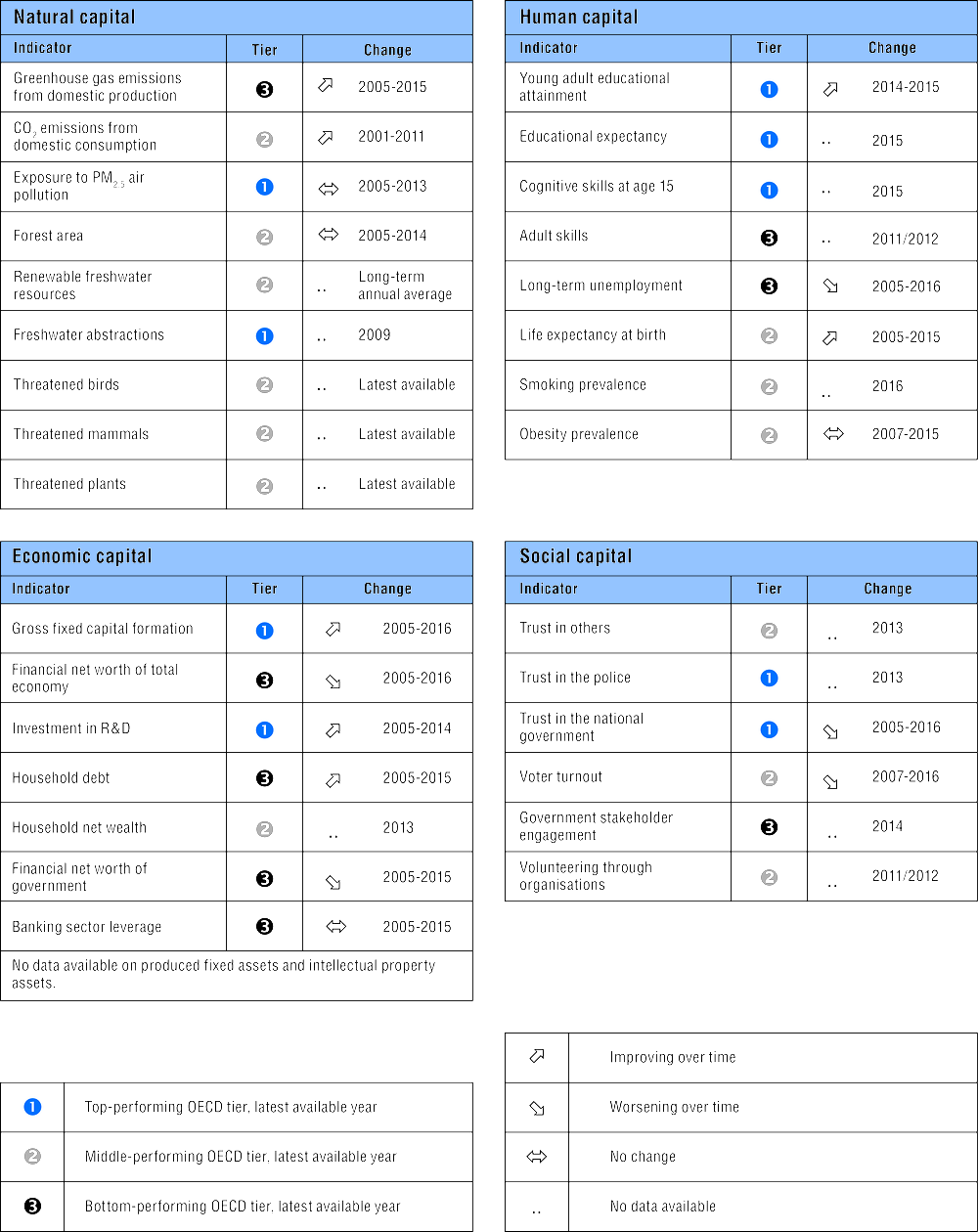How's life in Ireland?
Relative to other OECD countries, Ireland’s performance across the different well-being dimensions is mixed. While Ireland’s average household net adjusted disposable income was below the OECD average in 2015, average earnings were among the highest in the OECD (around 52 000 USD compared to an average of 44 000). At around 5%, the long-term unemployment rate is more than twice the OECD average, but both labour market insecurity and job strain are better than average. Housing conditions, health status and environmental quality are generally good, while civic engagement and governance is an area of comparative weakness. 80% of Irish adults have attained at least an upper secondary education, which is above the OECD average (75%), yet adult literacy and numeracy skills are in the lowest tier of the OECD. Perceived social support is a clear area of comparative strength: almost 96% of the Irish population reported having friends or relatives whom they can count on in times of trouble, compared to the OECD average of 89%.


